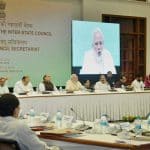TOPIC: Conservation, environmental pollution Algal Blooms and degradation, environmental impact assessment
- In an aquatic ecosystem algae or phytoplankton are the major producers of oxygen and food.
- Their number increases under favorable conditions (nutrient enrichment and warm water) which may often lead to population explosion called as Algal Bloom.
- It results in change of color of water (mostly red or brown).
- Algal Blooms are also known as Red/ Brown Tides.
- Most algal blooms are not harmful but some of them may produce toxins and affect organisms. They are called Harmful Algal Blooms (HAB).
- HAB are lethal for both human beings and marine ecosystems alike.
- The algal blooms survive for only three days.
- The presence of HAB can cause mass fish mortality as oxygen is depleted when these HAB die and decompose.
- There are greater chances of acquiring diseases and serious ailments, including paralytic stroke, if fish (that feed on such algae) caught in the algal bloom area are consumed.
- The blooms can also result in nauseating smell emanating from coastal waters causing nausea and breathlessness among human beings.
- Causative Factors: Both natural as well as human factors are responsible.
- Upwelling (nutrient rich waters that comes upwards from deep waters)
- Formation of mud banks
- Nutrient discharges from estuaries.
- Run-off from the land (washing phosphates into the sea)Algal Blooms during south-west and north-east monsoons.
- Changing patterns of nutrient-ratio of the coastal and the open ocean waters due to anthropogenic activities
- Increased aquaculture operations leading to enrichment of coastal waters
- Dispersal of toxic species through currents and storms. Many species of algae are also transported around the world in ships’ ballast water and discharged in areas where they did not occur previously. Others are distributed accidentally through the transfer of shellfish for aquaculture.
- Climate change may also be making some coastal environments more hospitable to harmful algal species.










